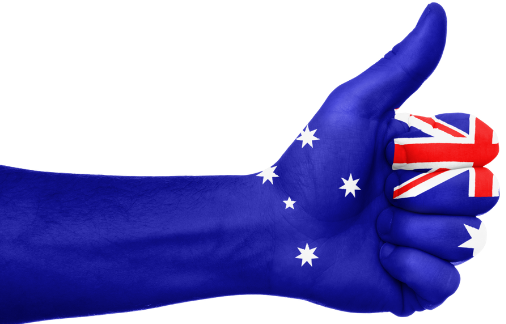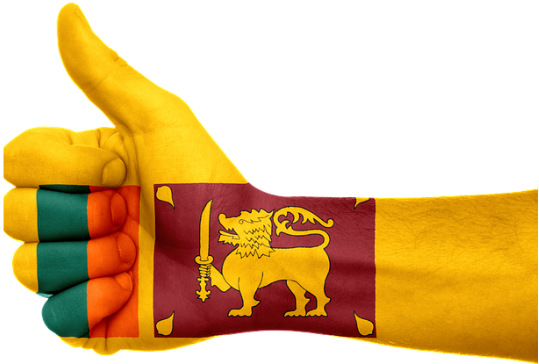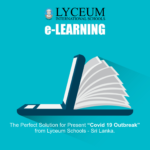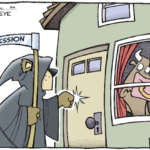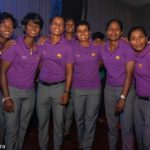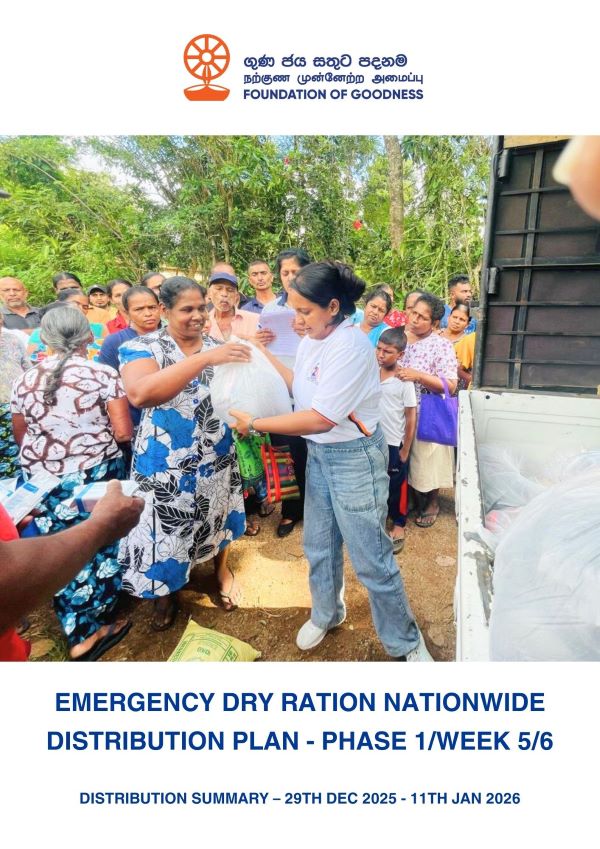SRI LANKA NEWS (APRIL 2020) by Victor Melder
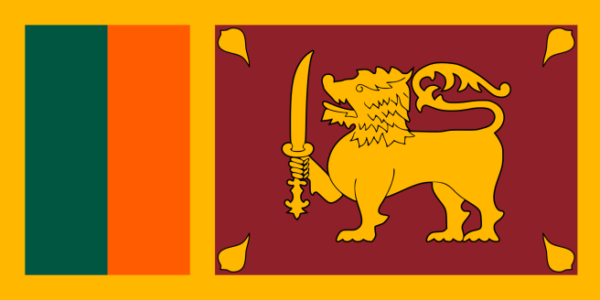

Between March 17 to April 4, 2020, 2,961 prison inmates have been released, on bail, on the recommendations of the special committee, appointed by President Gotabaya Rajapaksa, as part of efforts to combat the spread of Covid-19. A government communiqué said: The committee was appointed to make recommendations on the possibility of providing legal redress for the prisoners, following a request made by the inmates, during an inspection tour of the Prison premises, by the President, on an earlier occasion. Inmates who are unable to pay fines, or pay for bail money, or to produce personal bail, imprisoned for minor offences and those who had completed the better part of their prison term, or inmates suffering from illnesses and those who have not been granted bail, have been considered under this relief scheme, Director General, Legal Affairs of the Presidential Secretariat, Attorney-at-Law Harigupta Rohanadheera, said. At present, there are more than 26,000 inmates in the country’s prisons, while their total capacity does not exceed 10,000 persons. The health situation in the country had also been taken into consideration. Those who had been released are expected not to violate the terms of relief, granted by the Courts. (Daily Island, 6.4.2020)
A senior spokesperson for the Catholic Church, yesterday (06), told The Island that in line with measures taken by the government to curb the rapid spread of Covid-19, prayers wouldn’t be conducted at churches, countrywide, on Maundy Thursday (09), Good Friday (10) and Easter Sunday (12). Responding to a query, the spokesman, based at the Bishop’s House, Borella, emphasized that immediately after the outbreak of coronavirus the Church cancelled Sunday mass on March 15. The spokesperson pointed out that Palm Sunday services, on April 05, too, were not conducted with the participation of congregations. Instead, Palm Sunday services, conducted by the Archbishop of Colombo, Rt. Rev. Malcolm Cardinal Ranjith, were telecast live by Sirasa and Catholic TV Verbum. The Church pointed out that special prayers, during Holy Week, in the run-up to Good Friday, too couldn’t be conducted. Asked when resumption of prayers would be possible, the Church official said that it was too early to discuss the matter. The Church spokesperson said that the situation was so grave, at the moment, that health considerations should override religious dictates and sentiments. “We cannot be swayed by factors that may jeopardize the health of the nation,” the spokesperson said. The Archbishop of Colombo, at Palm Sunday services, conducted solo on Sunday, April 05, declared that time was not opportune for parliamentary election. In view of cancellation of prayers, the Church wouldn’t be able to conduct special services in memory of those who perished in the 2019 Easter Sunday attacks. Near simultaneous attacks on six targets, including three Churches at Kockckikade in Kotahena, Batticaloa and Katuwapitiya in Katana, on April 21, 2019, claimed the lives of 270. The blasts wounded approximately 400. Earlier, the Church was to conduct special prayers for the Easter Sunday victims. (Daily Island, 7.4.2020)
The Central Environmental Authority (CEA) should implement ample existing laws and act against some 7,000 industries –small and large – releasing their toxic waste to the Kelani Ganga, environmentalists urged. The Centre for Environmental Justice (CEJ) yesterday said that most of the industries did not even have valid licenses to operate their ventures. “There is no point in the CEA boasting that the water quality of the Kelani Ganga has improved. It is due to the coronavirus epidemic forcing the closure of most of those factory operations. In other words, water quality has improved, not due to any CEA action,” a CEJ spokesman said. The CEA said their laboratory tests showed that the Kelani Ganga water quality had improved. According to the CEA, the decrease in the release of industrial waste, into the Kelani Ganga, has resulted in the improved quality of its water. The clarity of the water was as good as, maybe, 50 years ago. Water samples were collected from the river at various places, including under the Kaduwela and Kalu Ela bridges, for testing and monitoring purposes. Research scientist Suranjan Karunaratna told The Island that unless the authorities, particularly the CEA, took immediate action to put an end to large scale industrial waste dumping, stressing that a motor company was one of the biggest polluters, the purpose was lost.
“We had pointed this to all relevant authorities and we wish they would take stern action against polluters,” he hopefully said. in addition, Karunaratna said some four major municipalities, within the Kelani basin, discharged untreated, or partially-treated sewage and domestic wastewater, into the river, causing excessive accumulation of organic waste. (Daily Island, 7.4.2020)
The United States Government, through the United States Agency for International Development (USAID), has committed $1.3 million USD to help protect healthcare workers and slow the spread of the virus with infection prevention and control support, the US Embassy said in a statement issued yesterday. “Through even the most difficult times, Americans and Sri Lankans support one another as partners and friends,” the statement quoted U.S. Ambassador to Sri Lanka, Alaina B. Teplitz, as having said. “This donation reflects our enduring relationship, resilient even in the face of this global pandemic. As in the past, we are proud to provide critical support to help Sri Lanka combat COVID-19.” Funding will provide Sri Lanka support to activate case finding and event-based surveillance, technical experts for response and preparedness, risk communication, infection prevention and control, and more. Additionally, the United States will help prepare Sri Lankan laboratory systems for large-scale COVID-19 testing. The United States is coordinating with the Government of Sri Lanka, and other stakeholders to identify additional priority areas for assistance. For more than 60 years, the United States has worked to ensure Sri Lankans are healthy and resilient through times of health and disaster-related crises. Assistance has helped eliminate malaria; saved thousands of lives during the dengue epidemic through state-of-the-art equipment; and supported individuals to know their HIV status as well as other HIV-related innovations. (Daily Island, 10.4.2020)
One thousand three hundred and forty seven people were still undergoing quarantine, in 12 centres, Army Commander, Lt. Gen Shavendra Silva said yesterday. Apart from 17, the rest were people who had been exposed to COVID-19 patients and were sent by health officials. “These are people that authorities thought posed the highest risk of contracting COVID-19. They needed to be kept away from others,” the Army Commander said. (Daily Island, 11.4.2020
An ‘exit strategy’ for the prevailing curfew could be implemented by end of April for several districts in the low risk zone if the country continues to execute the present Covid-19 prevention measures in a proper manner, Director-General of Health Services, Dr. Anil Jasinghe said. During a TV programme, Dr. Jasinghe said that the government was currently discussing the measures which could be implemented when setting up an exit strategy for the current curfew situation. Even if the lockdown is to be relaxed in certain areas in future, Dr. Jasinghe warned that the people must maintain strong social distancing strategies to prevent Covid-19 spread. Meanwhile, he also wished the Sri Lankans a very happy and a healthy New Year and encouraged the people to perform New Year traditions within the family. Dr. Jasinghe emphasised that people would have to refrain from visiting relatives, exchanging gifts and have to limit the celebrations within the family. (Daily Mirror online, 13.4.2020)
Sri Lanka’s total exports are to see a significant drop this year amounting to a US$7 billion loss in earnings with the revised targets set to achieve $10.75 billion in earnings. This would mean Sri Lanka will see a drop of about 42 per cent of its targeted export volume which was previously forecasted at $18.5 billion. Compared to last year when Sri Lanka’s export earnings topped $16.2 billion, this year’s forecast would see a 33 per cent drop in value, Export Development Board (EDB) Chairman Prabash Subasinghe told the Business Times. In this respect the EDB has revised its export target for merchandise segment to be approximately $7531 million and $3219 million for the services segment. Commenting on job losses, he explained that this is certain to happen however, no figures of job losses have been calculated as yet. With the apparel, rubber and gem and jewellery sectors particularly affected as a result of the outbreak of the coronavirus pandemic the global sales have reached zero level and the industries are struggling to survive. The local rubber industry is adversely impacted since the global demand for solid tyres has been affected in addition to the new industries that commenced production like boat building, ornamental fish and certain electronic and electrical products, Mr. Subasinghe noted. Government moves are underway to ensure the sustenance of the exports sector, he said adding that it is of paramount importance that the exports sector is a “national priority” right now. With just about 10-15 per cent of the factories in all sectors currently operational, plans are underway to ensure that this needs to increase to at least 50 per cent, the EDB chairman said. In this respect, even during curfew hours the government would ensure that workers would be allowed to travel to their respective workplaces to ensure continued production, he noted. Mr. Subasinghe explained that factories would be advised to ensure they comply with the necessary Ministry of Health guidelines in resuming work and with the authorisation of the relevant Public Health Inspector of each area the factories would be made operational. The EDB and the Board of Investment are authorised to inform the Police to issue curfew passes to these companies. He noted that the biggest exports in seafood are carried out by air and these continue to be exported and exports continue to happen daily from Sri Lanka. Currently the highest demand globally is for Personal Protective Equipment (PPE) for medical, food and beverage sectors and in this respect, the apparel sector could look at production in PPE, Mr. Subasinghe said. In addition, the demand for soap and hand sanitizers could increase the production of these items. Moreover, some of the agri foods and coconut-based products and other food items and certain petroleum products were likely to have just a marginal impact. Mr. Subasinghe noted that conversely the agriculture exports (Sunday Times, 19.4.2020
The Government will spend a staggering Rs 24 billion to give financial assistance of Rs 5,000 each to compensate those who have lost their income, a senior Treasury official said. The sum includes Rs 9 billion needed to be paid to a range of others who were last week added to the list of beneficiaries. The Government initially offered the Rs 5,000 payment for 1.8 million Samurdhi beneficiary families and later expanded it to 600,000 families who had been placed on the waiting list as Samurdhi beneficiaries. The payments cost the government more than Rs 12 billion. They also included elderly persons, disabled persons and kidney patients, costing the government another Rs 3.5 billion. However, last week the list was expanded by including private bus drivers, conductors, three-wheel drivers, barbers, self-employed persons, montessori teachers and school van drivers, among others. Meanwhile, the Government’s mechanism to distribute relief to those affected by the COVID-19 outbreak continues to be dogged by accusations of poor planning and blatant political interference linked to the upcoming parliamentary election. (Sunday Times, 19.4.2020)
A Gazette notification postponing Parliamentary elections until June 20, 2020 was issued by the Elections Commission last night. The Gazette notification said: “With reference to the Notice No. 2167/19 dated 21.03.2020 in terms of Section 24 (3) of the Parliamentary Elections Act, No. 01 of 1981, which stated that the Parliamentary Election for electing members of Parliament for the Electoral Districts set out in the Schedule hereto will not be held on 25th April 2020, it is hereby notified that the election for electing the members of Parliament for the aforesaid Electoral Districts will be held on 20th June 2020.” (Times online, 21.4.2020)
A record number of persons tested positive for COVID-19 yesterday pushing the cumulative cases to over 300 and forcing the Government to extend curfew in high risk areas having previously announced partial relaxation. Health authorities said 33 persons tested positive by last evening, bringing the total number confirmed to be infected with COVID-19 to 304, up from 271 the day before. The 33-patient spike is the highest number to be confirmed in one day since 11 March, when the first COVID-19 patient was identified. Thirty two of the 33 who tested positive yesterday were from the Keselwatta area in Colombo-12 and were in quarantine at home after health authorities categorised it as an isolated area last week. Yesterday’s test results bring the total of COVID-19 patients from Keselwatta to 47. The 33rd person who tested positive yesterday is believed to be from Piliyandala, however no confirmation of the patient’s residency was issued from health authorities at the time of print. The number of confirmed cases crossing the 300 mark has been faster. The third 100 cases come within 8 days as opposed to first in 54 days and second in 19 days The rise in cases prompted the Government to rethink its earlier announced gradual relaxation of restrictions. “The ongoing curfew in the districts of Colombo, Gampaha, Kalutara and Puttalam will remain in force till 5 a.m. on 27 April,” said the Presidential Media Division (PMD) issuing a press release. Earlier the curfew was to be partially lifted from tomorrow (22 April). Travel in and out of the four districts has also been strictly prohibited, except for those with essential services permits. The rest of the districts will have a curfew in place from 8 p.m. to 5 a.m. until Friday. All districts will remain under curfew through Friday 8 p.m. till 5 a.m. on 27 April. According to the Epidemiology Unit of the Ministry of Health, 98 patients who recovered from the virus have been released from care up to date with 199 active patients receiving treatment as a number of specialised hospitals around the island. Seven patients have succumbed to the virus thus far.
According to National Operations Centre for Prevention of COVID-19 (NOCPC) head and Army Commander Lt. Gen. Shavendra Silva, 49 persons who completed a 21-day quarantine program were released from the Punani centre after a medical check-up. Lt. Gen. Silva said that when the first patient was identified from Keselwatta, the military moved a number of persons who were in touch with the patient to quarantine centres and requested health authorities to subject all suspected contacts to the COVID-19 PCR test and credited the testing for the quick identification of a number of patients even though they showed no symptoms of the virus.(Daily Financial Times, 21.4.2020)
Fitch Ratings yesterday downgraded Sri Lanka’s sovereign rating, predicting the economic shock from COVID-19 would further erode rising public and external debt sustainability. Accordingly the Long-Term Foreign- and Local-Currency Issuer Default Ratings (IDR) have been changed to ‘B-’ from ‘B’. The Outlook is Negative. Sri Lanka’s external financing challenges have increased in the current environment of global risk aversion and financial market volatility, with large upcoming external debt redemptions and limited foreign-currency (FX) reserves. Sri Lanka’s reserves are about $ 7.2 billion, but the country’s external debt payments from May to December 2020 amount to $ 3.2 billion, including a $ 1 billion international sovereign bond payment due in October. Fitch estimates Sri Lanka’s external liquidity ratio, defined as liquid external assets/external liabilities, at about 64%, among the weakest in the ‘B’ rating category. “The authorities are seeking to meet external funding needs in 2020 through multilateral and bilateral support, but securing these funds could be challenging due to the pandemic and its effect on global liquidity and financing conditions.” Fitch expects the budget deficit to widen to 9.3% of GDP in 2020, from an estimated 6.8% in 2019. This is weaker than the authorities’ forecast of 7.5%, as Fitch expects significantly lower revenue due to the impact of the pandemic on economic activity and the spillover of tax cuts announced late last year. Fitch observed general Government debt is high and the pandemic has increased risks to public debt sustainability. The rating agency’s baseline forecast is for gross general Government debt/GDP to rise to about 94% in 2020 and 96% in 2021, from an estimated 87% in 2019, and to continue rising, increasing the risk of debt distress. This will see gross general Government debt stay far greater than the ‘B’ median of 52%. Fitch forecasts GDP to contract by 1.0% in 2020, from 2.3% growth in 2019, on account of the pandemic. Sri Lanka has so far recorded a relatively small number of coronavirus cases, and authorities have begun to loosen lockdown restrictions. Nevertheless, private consumption, which makes up almost 70% of GDP, is likely to stay muted as a result of partial lockdowns, domestic travel restrictions, and other social distancing measures Travel and tourism, which the World Bank says accounts for 12.5% of Sri Lanka’s GDP, will be particularly hard-hit, with commercial flights into the country suspended. The potential for an economic recovery in 2021 hinges on an early return of tourism receipts and increasing domestic activity, which is highly uncertain and is dependent on the course of the pandemic. A second wave of infections that prompt further periodic lockdowns would result in weaker GDP for 2020 and 2021. The Government debt/revenue ratio was about 690% in 2019, significantly higher than the ‘B’ median of 258%. FX debt continues to be about half of total Government debt, leaving Sri Lanka’s public finances vulnerable to renewed currency depreciation Fitch’s banking sector outlook was revised to negative in March, reflecting a more challenging operating environment due to the pandemic, which has pressured banks’ asset quality and profitability. Sri Lanka has a medium World Bank Governance Indicator ranking in the 46th percentile, reflecting a recent record of peaceful political transitions, a moderate level of rights for participation in the political process, moderate institutional capacity, established rule of law and a moderate level of corruption. (Daily Financial Times, 25.4.2020)
Forbes and Walker tea report of 24th April commented that deficit revenue of Ceylon Tea exports first quarter 2020 January to March at Rs. 49.2 Billion was a Rs. 13.2 Billion YOY reduction compared to 2019. 2019 export revenue the report said was Rs. 62.4 Billion. Although prices were placed in a more or less stable position first quarter 2020 quantities on offer were drastically reduced. Plantation sources said severe drought conditions experienced first three months 2020 with literally no rain during this period caused crop loss at Plantation level. Adding to this observation they said indicated crop loss also was that cost of production ( COP), was prohibitive and losses at estate level were substantial. Although prices were described as good, such income was below the COP which was that losses were universal in the sector. Small holders too who we spoke to were placed in similar dire circumstances but their plight was not as severe as the organized Plantation sector. The Plantation sector continued to function. Workers reported to work. The exceptional circumstances were that the coronavirus was not reported to have overtaken the sector. This was applicable to production at all elevations. Added to drought conditions it was also that Covid 19 placed stress to RPCs who had to ensure food supplies to workers were continuous and not interrupted. Within these limitations the industry continued to be productive. Reverting to prices and market conditions, John Keels Holdings Tea Brokers said in their report dated 24th April that net sales average ( NSA), at the auction concluded this week was Rs. 685.92, per kgs. The same period last year was Rs. 585.37. in Dollar values the comparison was 360 Dollar cents 2020, 2019 was recorded as 328 Dollar cents. Iraq was the leading buyer at the auctions this week. Low growns recorded good demand. Flowery grades sold well with prices realized that some garden marks fetched Rs. 2300. Per kilo, there were also instances that such teas were sold at as much as Rs. 3700. Per kilo. Additionally Russia, Turkey, Iran, CIS countries, including Libya were active at the concluded auctions. However Jordon, the UAE, and Germany were not strong buyers in Colombo. (Daily Island, 27.4.2020)
The share of revenue from direct taxes had risen to 24.7% in 2019 from 18.1% in the previous year reflecting the impact of the implementation of the new Inland Revenue Act, No. 24 of 2017, with effect from 01 April 2018, the Annual Report of the Central Bank stated yesterday. Meanwhile, non-tax revenue declined to Rs. 156.0 billion in 2019 from Rs. 207.7 billion in 2018, resulting in the share of tax revenue in total revenue increasing to 91.8% in 2019 from 89.2% in 2018.” The total revenue as a percentage of GDP declined due to the reduction in both tax and non-tax revenue. Accordingly, total Government revenue declined to 12.6% of GDP in 2019 from 13.4% of GDP in 2018. Tax revenue declined to 11.6% of GDP in 2019 from 11.9% of GDP in 2018 as a result of the lower revenue collection from excise duties, VAT, SCL, Cess, and PAL despite a significant increase in revenue collection from income taxes. “In this backdrop, it is important that adequate measures are initiated to strengthen Government revenue mobilisation, particularly in the context of renewed risks to economic recovery amidst the widespread COVID-19 outbreak globally and its adverse impact on fiscal policy and debt sustainability in Sri Lanka,” the report said. Similarly, non-tax revenue declined to 1% of GDP in 2019 from 1.4% of GDP in 2018 due to lower revenue from fees and charges, non-availability of distributable profits from the Central Bank and reduction in profit and dividend transfers from State Owned Businesses and Enterprises (SOBEs). In nominal terms, total revenue declined to Rs. 1,890.9 billion in 2019 from Rs. 1,920 billion in 2018 as the reduction in non-tax revenue outweighed the marginal increase in tax revenue collection. Tax revenue increased by 1.3% to Rs. 1,734.9 billion reflecting the significant increase in revenue from income taxes, although revenue collection from excise duties, VAT, SCL, Cess, PAL and NBT declined during the year. Revenue from indirect taxes continued to be the major contributor to the Government coffers, accounting for 75.3% of total tax revenue in 2019. (Daily Island, 30.4.2020)
